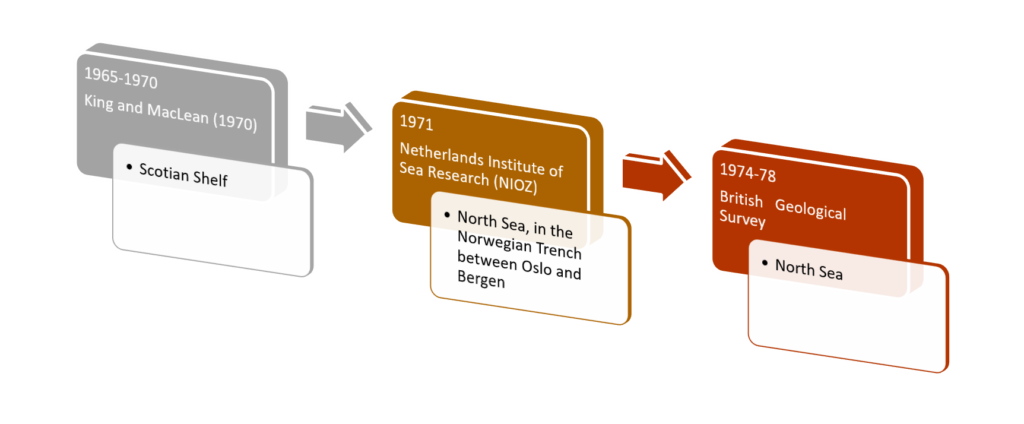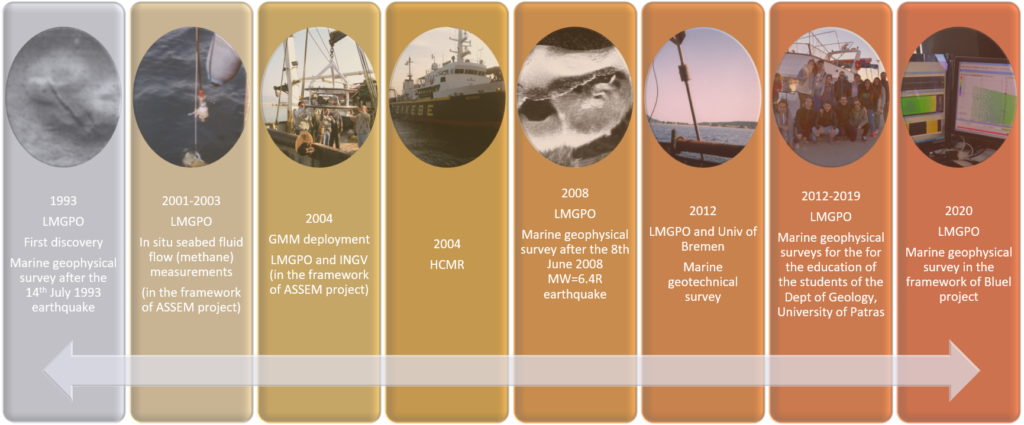Project Background
Seabed fluid flows (SFF)
- Since the first pioneer spectacular discoveries in the oceans for hydrothermal vents and pockmarks at the late ‘60s, there has been a growing body of information indicating that seabed fluid flows (SFF) constitute a fundamental feature in the nature and composition of the “marine system”. The significance of SFF is beyond the geological sciences, since they are highly influential to marine ecology and chemistry and, as recently reported, they represent globally an important greenhouse gas source for the atmosphere. Sea bed fluid seepages and associated phenomena may control a large range of geological hazards (slope instabilities, liquefaction, submarine landslides, blowouts during drilling operations, gas escapes, pockmarks and mud volcanoes)
- On the other hand, the benefits of seabed fluid flows are of great interest and can be distinguished in three main categories
- (i) direct benefits, which include freshwater seeping, heat supplying by geothermal and hydrothermal fluids and the utilization of methane in the form of gas hydrates,
- ii) benefits as indicators, because venting and seeping fluids indicate the presence of a potential valuable source
- (iii) indirect or biological benefits, because the injection of microbe and nutrients into the water column by the seabed fluid flows enhance the biological productivity.
- This important geological phenomenon has widespread implications on
- (i) man’s activity in the ocean and in many cases is associated with hazards,
- (ii) the global climate and
- (iii) the benthic ecology.
Pockmarks
Seabed fluid flow is very often associated with pockmarks, mud-volcanoes and faults. There is no doubt that among the seafloor features which are associated with SFF’s, pockmarks still bear some air of mystery even despite their extensive worldwide study. Pockmarks are cone-shaped depressions which occur on muddy seabed sediments. Fluid escape is invoked as the forcing mechanism for pockmark formation through winnowing and erosion. Natural gas from petroleum products, organic-rich sedimentary deposits and gas hydrates are potential sources for the fluids and buoyancy required to form pockmarks, although escaping groundwater has also been suggested as causative agent. Pockmarks are indicators of some form of seafloor fluid escape.
The trigger mechanisms for pockmark formation are:
- (i) excavation by freshwater seepage,
- (ii) venting of interstitial gas (episodic gas eruptions and/or gas venting),
- (ii) porewater escape
- (iv) sediment rafting by methane gas hydrates. The above indicate that pockmarks are indicators of some form of seafloor fluid escape. Processes that could establish and sustain fluid flow include gas pressure anomalies and pressure differentials


